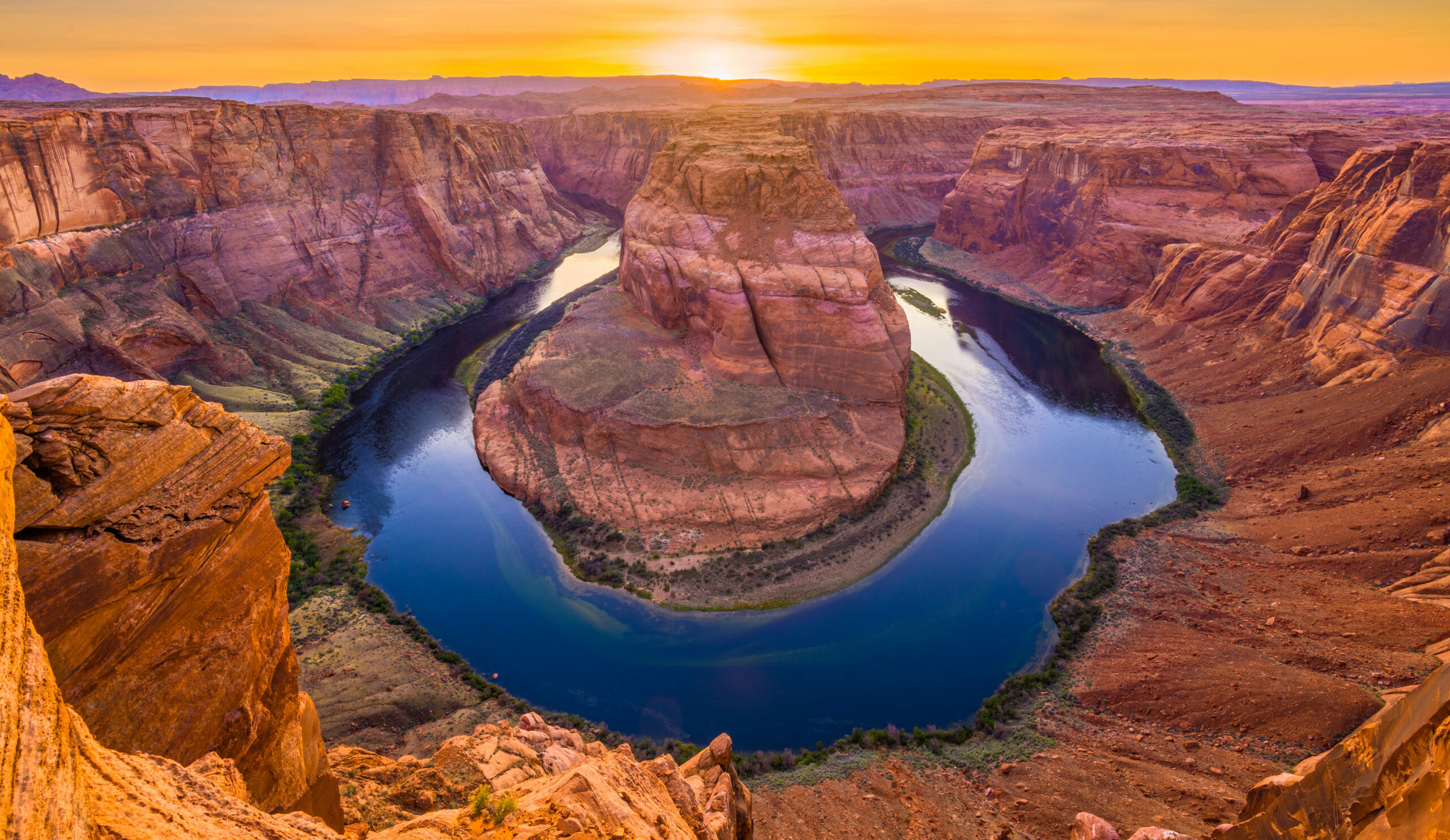Executive Summary
Arizona is in the middle of one of the worst droughts in its history. Water supplies throughout the state are dwindling. The state is facing drastic cuts to its Colorado River allocations, posing a major threat to its water supplies. Recognizing the severity of the situation, state lawmakers committed $1 billion in 2022 to find solutions to this pressing issue.
The state has long been a leader in water conservation, but today’s drought is creating new challenges. Policymakers are considering several strategies to augment the state’s water supplies, such as water reuse and desalination, while also plugging leaks in existing water supply “buckets.” In addition, a variety of legal barriers prevent water from being allocated efficiently, including a lack of clarity over water rights in large parts of the state. And groundwater remains an open-access resource in much of the state, draining aquifers that many agricultural communities depend on.
This policy report offers recommendations that would improve Arizona’s water policy to help the state continue to thrive even amid prolonged drought conditions. As the state’s population is expected to grow over the next two decades, it is crucial that Arizona takes action now to prepare for the possibility of a hotter and drier future. Reforms in four specific policy areas would help improve water allocation and enhance water supplies to enable Arizona’s continued growth and economic success.
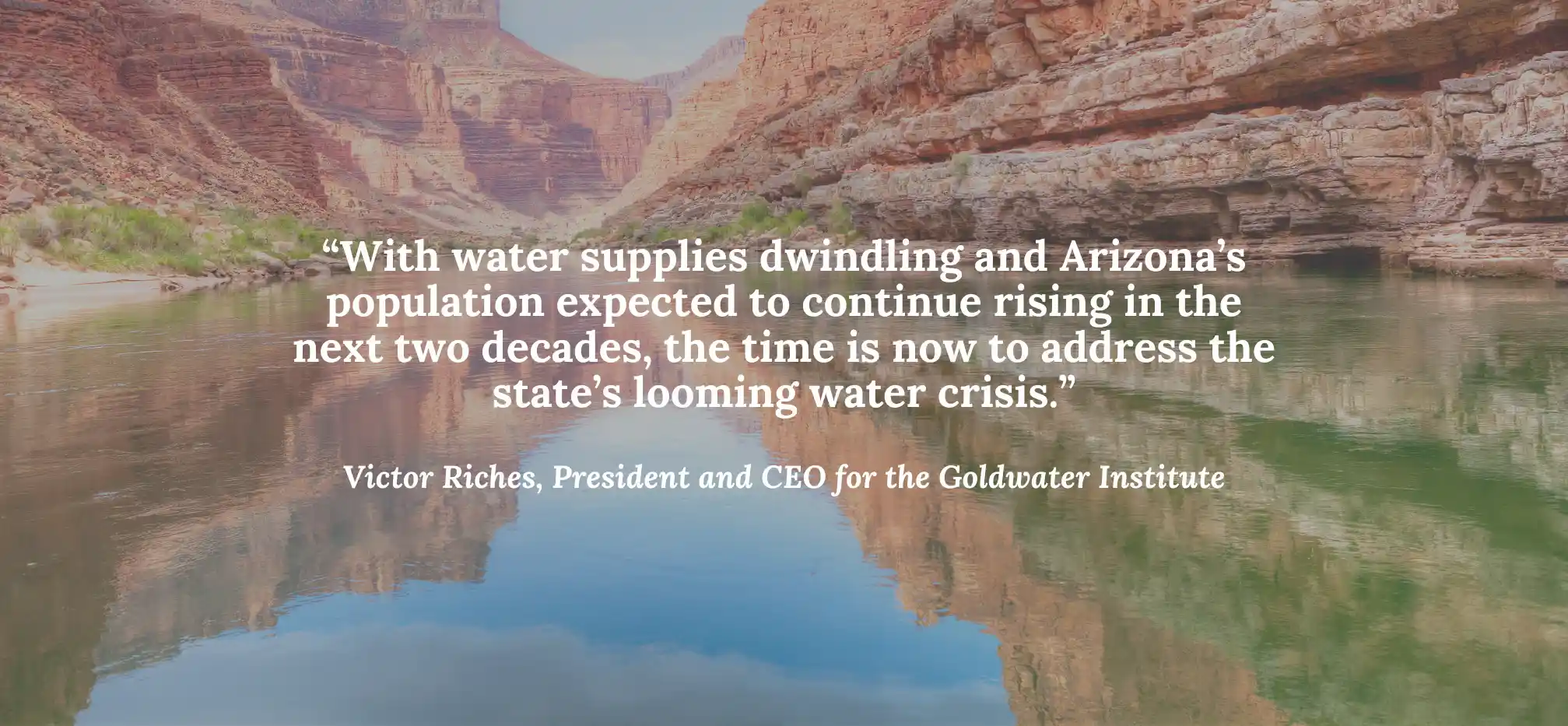
Summary of Recommendations
1. Improve legal and policy institutions so the markets for surface water flourish.
- Expedite adjudications to help water-rights owners clarify and secure their property rights.
- Establish a state water trust to facilitate market trading and lower transaction costs.
- Empower farmers to engage in beneficial water transfers, even outside of irrigation districts.
- Use reverse auctions to limit economic distortion and maximize conservation opportunities.
2. Clarify rights to groundwater and innovatively use markets to ensure the sustainability of groundwater basins.
- Empower groundwater users to form Active Management Areas and set management goals.
- Deploy funding for groundwater monitoring devices to assist with management.
- Allow banking of surface water rights in local groundwater aquifers.
3. Explore strategies to augment water supplies while weighing costs and benefits.
- Remove regulatory barriers to direct potable reuse by municipalities.
- Explore creative interstate opportunities to collaborate to increase water supply.
- Avoid strategies to increase water supply that are not cost-effective.
4. Support voluntary water conservation in urban areas.
- Support municipalities establishing voluntary, incentive-based xeriscaping programs.
- Champion continued indoor water reuse.
-
Introduction
Arizona arguably leads the nation in water conservation efforts. Cities such as Phoenix already reuse the vast majority of treated wastewater.[1] The state established a system to manage groundwater pumping in fast-growing areas decades before neighbors such as California.[2] And Arizona has built and put to use significant infrastructure to store water above and below ground.[3]
These efforts have paid off, allowing Arizona’s population to grow while using less water over time. In 2017, water use statewide was less than it had been 60 years earlier, despite the fact the population grew seven-fold over the same period.[4] Arizona has also prudently planned for the long term by storing roughly 3 trillion gallons of water in underground aquifers, equivalent to the amount needed to supply Phoenix for three decades.[5]
Arizona’s water is shared among a variety of users. Agriculture accounts for 72% of all water used in the state, municipalities account for 22%, and industry for 6%.[6] These users draw on several sources, including in-state surface waters, allocations from the Colorado River, groundwater, and reclaimed water. Surface water from rivers accounts for a little more than half of all water used in the state, with the Colorado River alone providing about one-third of the state’s total supply. Groundwater accounts for about 40% of supply, while reclaimed water makes up 5%.[7]
As the state’s climate becomes hotter and drier, it will be increasingly difficult for Arizona’s water systems, which are already overallocated in many cases, to meet demand.
These sources are facing increasing threats due to drought and the state’s arid climate. Arizona has junior rights to the Colorado River compared to other states in the basin, which means that it is disproportionately impacted by cuts to water supplies. As the state’s climate becomes hotter and drier, it will be increasingly difficult for Arizona’s water systems, which are already overallocated in many cases, to meet demand.
Last year, legislators allocated $1 billion in funding to water projects, but the state has yet to determine how it will spend many of these funds.[8] Ideas to address supply shortfalls include increasing the reuse of water, importing water from eastern states, and building or funding desalination plants. If pursued in a cost-effective manner, these strategies may eventually prove useful, but they alone will not address the state’s water shortages. To truly address the challenges of water scarcity, Arizona policymakers should pursue reforms that use water markets to improve water use and allocation. Allowing water rights to be voluntarily traded among competing users rewards conservation, motivates efficient use, and encourages cooperation instead of conflict.
Delivering better water conservation does not require a dramatic expansion in the role of government. On the contrary, promoting more efficient use of water will yield reforms that allow markets to function better. Responsibilities such as defining property rights and adjudicating disputes are traditional, anodyne roles for government, and markets are better at revealing opportunities than governments are at predicting them, including when it comes to the potential for conservation. Also, markets lead to voluntary win-win outcomes, while political allocation of resources entails government picking winners and losers.
There are numerous ways that market-based approaches can increase water efficiency while leaving the party that reduced water use better off. One innovative example from the Verde Valley demonstrates how water conservation can benefit agricultural producers. Farmers, local entrepreneurs, and investors that included The Nature Conservancy collaborated to find a creative way to conserve water. Investment in a commercial malting facility provided local farmers with a market for barley, which uses much less water than alternatives such as alfalfa. The farmers involved spread risk by diversifying their crop portfolio and maintained profits by being able to sell into a new barley market.[9] Innovative strategies that produce water conservation while keeping farms farming are likely to be more popular than those that pit rural against urban interests in a zero-sum framework.
Water markets depend on water rights being clearly defined, enforced, and transferable. Yet in much of Arizona, legal and policy barriers impede beneficial water transfers. Moreover, uncertainty about ongoing adjudications of water rights in much of the state hamstring reforms that could ensure water is used where it is most valued. Decades-long adjudications of the Gila River and Little Colorado River watersheds, for example, are still working to clarify water rights across large areas of the state.
Another opportunity relates to groundwater in rural parts of the state. Five largely urban areas of the state are designated as Active Management Areas, where groundwater use is managed to avoid depletion. In many rural areas, however, groundwater essentially remains a common-pool resource where rights are undefined and pumping is largely unrestricted. As a result, water levels in many of these basins are rapidly declining, threatening the agricultural communities that rely on them.
This report offers detailed recommendations for reforming Arizona’s water policy to address the state’s water challenges. While opportunities exist to augment water supply in the future, there are several opportunities to improve the way water in the state is conserved and demand is managed.
Recommendations
Improve legal and policy institutions to let surface water markets flourish
Markets allow people to allocate scarce resources among themselves through cooperation instead of conflict. A voluntary exchange of water rights moves water from lower- to higher-valued uses. If a buyer values water less than a seller does, then the trade will not happen. Water markets can also encourage conservation if a user who conserves water is able to lease or sell that saved water to other users. A farmer who saves water by increasing irrigation efficiency, for instance, might sell the conserved water to a downstream city for residential use or to a conservation group for maintaining fish habitat. Whether a short-term lease between two farmers, a longer-looking transfer between a city and an irrigation district, or any other voluntary agreement to trade water, markets encourage efficient use of a scarce resource.
Before water can be traded, however, users must know who has rights to how much of the resource. As in many western states, water users in Arizona collectively have paper rights to more water than is available in reality. The state has sought to resolve such conflicts through a process called general stream adjudication, whereby all water claimants in a river system participate in a single court case that clarifies and defines rights among users.[10] The situation is somewhat akin to bankruptcy proceedings. Many parties have claims to a resource and, in aggregate, the claims exceed the total amount of the resource available. The justice system intervenes to settle the claims, prioritizing them by the date they were originally made.[11]
Uncertainty around water claims undercuts the ability of markets to deliver efficient use and encourage conservation. Where water rights are clear, market approaches can lead to win-win solutions among competing users. In addition, markets starkly contrast with top-down, mandated water reductions that are common in some states and localities, which force all users to cut back on water with no regard to the relative value of their different uses. Reforms that expedite adjudications and promote water markets can encourage efficient use of the resource and promote conservation measures that will help Arizona address water scarcity challenges in the short and long term.
Expedite adjudications to help water-rights owners clarify and secure their property rights.
In Arizona, two general stream adjudications in the Litter Colorado River and Gila River watersheds have been ongoing for decades. These adjudications involve tens of thousands of claimants across a large swath of the state, including farmers, municipalities, tribes, and federal agencies.[12] Resolving claims among such a vast number of parties is inherently complex and time-consuming. For instance, a hydrographic survey issued by the state in 1990 as part of the Little Colorado River adjudication received 3,456 objections.[13] Despite the fact these adjudications began decades ago, they have yet to be settled, leaving every one of those users uncertain about the status and security of their water rights.
The state could take several steps to expedite such adjudications. First, establishing a specialized water court to oversee general stream adjudications and related litigation could help reduce the cost, delay, and uncertainty of the process. The highly specialized and expansive nature of such adjudications means that the process demands particular expertise and sizable resources. Idaho and Montana have created specialized courts to oversee general stream adjudications, and Colorado is the only western state with permanent water courts.[14] Special masters have been employed in general stream adjudications in Arizona, but given the protracted nature of these proceedings, the state should consider establishing a specialized court with dedicated funding to speed up the process.
Second, the state could provide additional funding and direction to the Arizona Department of Water Resources (ADWR) to expedite the hydrographic survey reports and other technical data analysis that state law requires it to prepare for adjudications. Adjudications have stalled for years waiting for state officials to compile these reports. While it may be more politically appealing to propose spending for new water infrastructure, providing funds to help expedite adjudications would yield significant benefits by clarifying water rights and clearing the way for efficient transfers and use of water.
Third, the state should identify and exempt de minimis claimants from adjudications and guarantee that their rights will not be undermined by their exclusion from the adjudication. Adjudicating the rights of thousands of users with small claims adds enormous transaction costs and slows down the process, and allowing them to continue their use without adjudication has little effect on other users or water conservation. A reasonable threshold to exempt claimants, based on previous experience in cases such as the Snake River adjudication in Idaho or the Mojave groundwater adjudication in California, is 10-acre-feet per year.[15]
Establish a state water trust to facilitate market trading and lower transaction costs.
Establishing a state water trust would be one way to promote beneficial water transfers and reassure parties involved in adjudications. A state agency or nonprofit group could operate a water trust that would hold donated or sold water rights in escrow until they are transferred to a buyer. For example, a farmer who increased irrigation efficiency could place their conserved water rights into escrow in the trust, where they could be purchased, generating revenue for the farmer. Washington has established such a water trust, which helps match buyers and sellers and allows for acquisitions of rights for preserving instream flows and similar purposes.[16]
A trust would reduce transaction costs of water transfers by serving as a clearinghouse for trades. In exchange for matching buyers and sellers, the trust could charge participants a small portion of each traded water right, which could be retained in escrow in the trust. While in escrow, these retained rights would provide conservation benefits by augmenting stream flows. The retained rights could also cumulatively create a bank of water rights to eventually be purchased by parties who may desire more water rights than they are awarded through adjudications.[17] Additionally, funds raised through purchases of water rights from such a bank could be used to cover costs of administering the trust.
By providing confidence that water will be available for purchase in the future through an efficient process, a water trust may also give comfort to parties in ongoing adjudications by lowering the stakes somewhat. It may also encourage water-rights owners to participate more actively in trading, because if they later decide they need to buy back some of the water they’d previously sold or leased, they will have an efficient way to do so.
Empower farmers to engage in beneficial water transfers, even outside of irrigation districts.
Irrigation districts are political entities that generally obtain and distribute water to farmers, charging them for services provided, in addition to performing related duties within their boundaries. Typically, irrigation districts can block transfers that export water—that is, transfers between a farmer within a district and a farmer outside of it. In Arizona, however, irrigation districts have two unique abilities. First, they can block transfers between farmers within a district; although such cases are not common, they could suppress relatively simple win-win transactions that would improve the efficiency of water use at the district level. Second, irrigation districts can limit transfers between other districts within the same watershed.[18]
It is one thing for districts to stop trades that would harm others’ property rights by altering the extent and nature of return flows (water that returns to a surface water system after being used and is therefore available for diversion downstream). But giving them veto power over trades that do not have adverse impacts on other water users impedes transfers that could put water to its highest-valued use. One way to implement such a reform would be to make approval the default rule for proposed transfers, putting the onus on districts to show that a trade would harm another user’s rights.
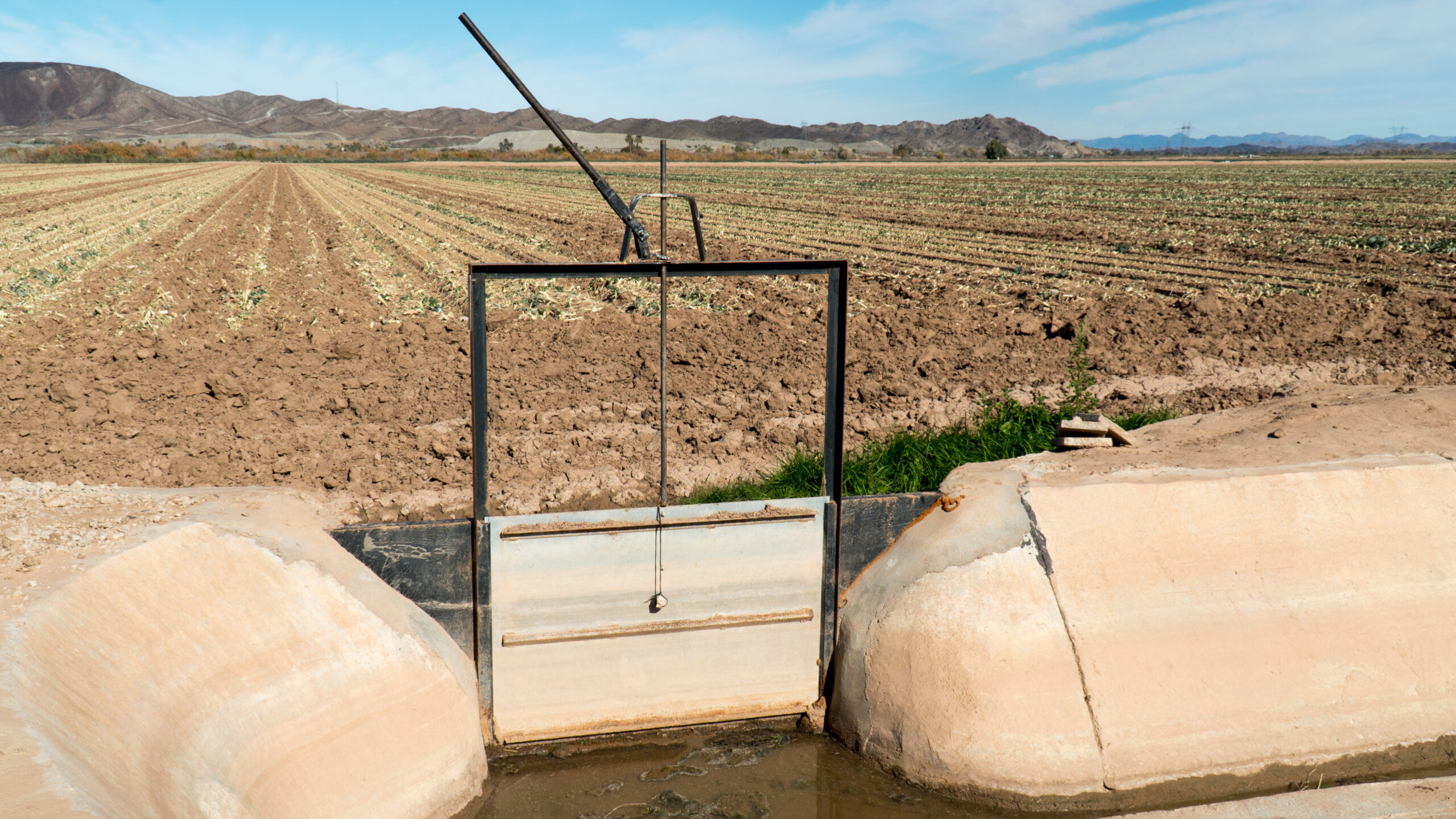
Use reverse auctions to limit economic distortion and maximize conservation opportunities.
The state could also dedicate funds to purchase water directly from existing users on their own terms. The most effective way to do this would be with what’s called a reverse auction, a tool commonly used by the U.S. Department of Agriculture and conservation groups to promote various farmland conservation actions.[19] In a reverse auction for water, individual farmers or irrigation districts would submit “bids” consisting of 1) proposed water conservation measures, with details of how to verify those measures, and 2) the price they would be willing to accept to take those measures. The state could then select the winning bidders—those that yield the most water conservation at the lowest price. This water could be used for a variety of purposes: satisfying necessary cuts from the state’s allocation of Colorado River water, recharging aquifers, firming up cities’ supplies, or even transferring to other agricultural users.
Reverse auctions have several benefits. First, they let farmers conserve and sell water under conditions that they set, allowing for flexibility to fit on-the-ground realities. Second, reverse auctions give users the incentive to submit competitive bids, thereby revealing information about the value of water across various uses, even in the absence of a well-functioning water market. Third, a reverse auction would let the state act as a sort of clearinghouse for potential water transactions, smoothing the process of matching sellers with buyers. This may be a valuable alternative to fully formed water markets that will not materialize unless the barriers previously identified in this brief are addressed.
Clarify rights to groundwater and use water markets to ensure the sustainability of groundwater basins
Arizona is generally considered a leader in groundwater management, largely due to the state’s early efforts to quantify and monitor pumping. In contrast to the lack of clarity over much of the state’s surface water rights, groundwater rights have been formally established and are managed in much of the state. In 1980, partly in return for the federal government agreeing to build the Central Arizona Project aqueduct that links the center of the state to the Colorado River, Arizona passed the Groundwater Management Act.[20] The legislation helped mitigate what had become a “tragedy of the commons” in fast-growing agricultural and urban areas: Individual users had pumped groundwater with little or no regard to the collective effect of their actions, thus depleting aquifers. All users stood to benefit from defining property rights to groundwater, even if it meant constraining pumping, because defined and managed rights to the resource would secure access to it over the long run by forestalling depletion.
The act and subsequent legislation included various reforms, but it notably 1) limited development of new wells in areas that were already stressed, 2) quantified some groundwater rights for existing users, and 3) allowed groundwater to be stored and traded.[21] The state has established five Active Management Areas (AMAs), which have the most stringent management regimes, each with a specific management goal for its finite groundwater.[22] Approximately 80% of the state’s population is covered by AMAs, which also encompass the vast majority of municipal and industrial groundwater use.[23] By contrast, only about one-third of statewide agricultural groundwater use is managed, and the unsustainable rates of pumping put the resource at risk in many rural areas.[24]
Recent research estimated that adjudicating groundwater rights and instituting a market to groundwater in a portion of California’s Mojave Desert not only helped stabilize water tables but also yielded net economic benefits in excess of $400 million.
Ending open-access to groundwater and establishing tradable rights to it in areas outside of AMAs would encourage conservation and efficient use of water, particularly where groundwater is largely used for agriculture. Moreover, it would benefit agricultural users by better defining and securing their groundwater rights, ensuring sustainable supplies of groundwater over the long run and presenting opportunities through trade. Recent research estimated that adjudicating groundwater rights and instituting a market to groundwater in a portion of California’s Mojave Desert not only helped stabilize water tables but also yielded net economic benefits in excess of $400 million.[25] Clarifying property rights and establishing the market allowed some water to be moved from low-value agricultural activity to higher-value urban uses while still leaving plenty of water in agriculture. It also encouraged shifts that improve agricultural water efficiency, such as switching from alfalfa to pistachio production.
Empower groundwater users to form Active Management Areas and set management goals.
The Groundwater Management Act provides a way for local residents to form Active Management Areas.[26] In November 2022, voters in the Douglas Basin passed a ballot initiative to form an AMA, the first time Arizona voters have decided to create one.[27] The agricultural sector already uses a great deal of water in the southeastern Arizona basin. The measure will halt expansion of irrigation throughout the basin and prompt groundwater pumping to be managed to prevent depletion.
The existing framework for creating AMAs has its limitations, however. For one, ADWR can take up to two years to draft initial guidelines for managing a newly designated basin. And the local community has somewhat limited authority to shape the future of groundwater use. According to state legislation, there is little clear guidance as to the nature and stringency of the management goals that are ultimately to be decided by the director of ADWR.[28]
Arizona should articulate a clear standard and formal process for rural areas to not only create their own Active Management Areas but also establish management goals that will be set within new areas. For example, the state could create a process for residents of candidate AMAs to promulgate their own management goals and plans for achieving them, subject to ADWR approval. Doing so would give rural groundwater users more voice in the process while still allowing ADWR authority to ensure sustainable use in the long run.
Deploy funding for groundwater monitoring devices to assist with management.
Accurate data is crucial not only to managing groundwater use but also to establishing trading in the resource. In much of the West, however, lack of collection and reporting of groundwater data hamstrings management.[29] While extensive data is available for AMAs in Arizona, dedicated funding to help measure groundwater supplies and use would help communities interested in establishing new AMAs with measurement and enforcement.
Measurement and monitoring were vital to the recent development of a groundwater market in several coastal basins in Ventura County California, known as Fox Canyon. Farmers there use telemetric sensors to ensure accurate collection of data from smart meters and to prevent underreporting of water use.[30] A grant helped provide funding for the sensors, which assure users that all pumpers are monitored consistently and equally.
Allow banking of surface water rights in local groundwater aquifers.
Arizona has stored unused portions of its Colorado River water entitlement underground for several decades through the Arizona Water Banking Authority. The stored water provides municipal and industrial users reliant on Central Arizona Project water with a backup supply that can be recovered during times of shortage. The state’s water banking activity has also allowed it to fulfill obligations for Native American water rights and effectively carry out interstate water trades.[31] An agreement with Nevada allowed Arizona to bank water on behalf of that state; when Nevada needs additional supply, it is permitted to take a portion of Arizona’s Colorado River allotment, and users in Arizona then pump an equivalent amount of stored water.[32]
Storage and recovery of appropriative water in local aquifers throughout the state could yield similar benefits to those realized through the banking of Colorado River water. A system to bank and trade water, however, first requires clear, defined property rights, which hinges on the completion of general stream adjudications for much of the state. But reforms that allow for storage and recovery of non-Central Arizona Project water would not only set the stage for an eventual expansion of water banking in Arizona, they would also increase the benefits of expediting adjudications. State law currently defines nonrecoverable water storage as a beneficial use, but such water “may not be recovered on an annual basis, may not be credited to a long-term storage account and may not be used for replenishment purposes.”[33]
Explore strategies to augment water supplies while weighing costs and benefits
Arizona policymakers are considering various strategies to augment the state’s water supplies, including reuse, desalination, and importation.
Remove regulatory barriers to direct potable reuse by municipalities.
One solution for water-strapped states like Arizona is to invest more heavily in recycling water. Many cities across the West practice indirect potable reuse—treating wastewater to potable standards and then releasing it back into streams of aquifers before re-diverting it. By contrast, direct potable reuse (DPR) can deliver more water at a lower cost by avoiding the middle step of dilution. With DPR, wastewater is recycled using advanced purification technologies that make it safe for drinking. Technologically, this is already possible, because cities across Arizona already treat their water to a standard that renders it safe for DPR.
In fact, the city of Scottsdale has been practicing DPR in a limited, demonstration capacity since 2019.[34] The only reason that DPR isn’t more widespread in Arizona is because environmental regulations do not allow it. DPR is only legal on a case-by-case basis in Arizona.[35] Several other states, however, allow DPR or are in the process of legalizing it.[36] In 2022, the legislature directed ADWR to establish rules to allow more widespread use of DPR, but the process is expected to take several years to complete.[37] The legislature should renew its mandate to ADWR and provide additional support to legalize DPR.
Explore creative interstate collaborations to increase water supply.
One approach considered by Arizona is to collaborate with others to fund projects that increase water supply elsewhere and, in return, allow the state to access more water itself. Two principal ideas are funding reuse programs or desalination plants in California or Mexico. In return for increasing water supplies in these places, Arizona could receive a larger Colorado River allotment.
This clever form of interstate—or even international—collaboration is worthy of consideration. California, for example, currently flushes much of its treated wastewater into the ocean. Arizona could help California pay for the infrastructure necessary to “upcycle” that water in exchange for some of California’s Colorado River supply. Such negotiations could prove to be far more cost-effective than other water-supply strategies, such as building pipelines or other new infrastructure to bring water from far-away regions.[38] Already, Arizona has partnered with Metropolitan Water District to provide initial support for a proposed large-scale recycled water project in Southern California.[39] Policymakers should consider similar opportunities elsewhere.
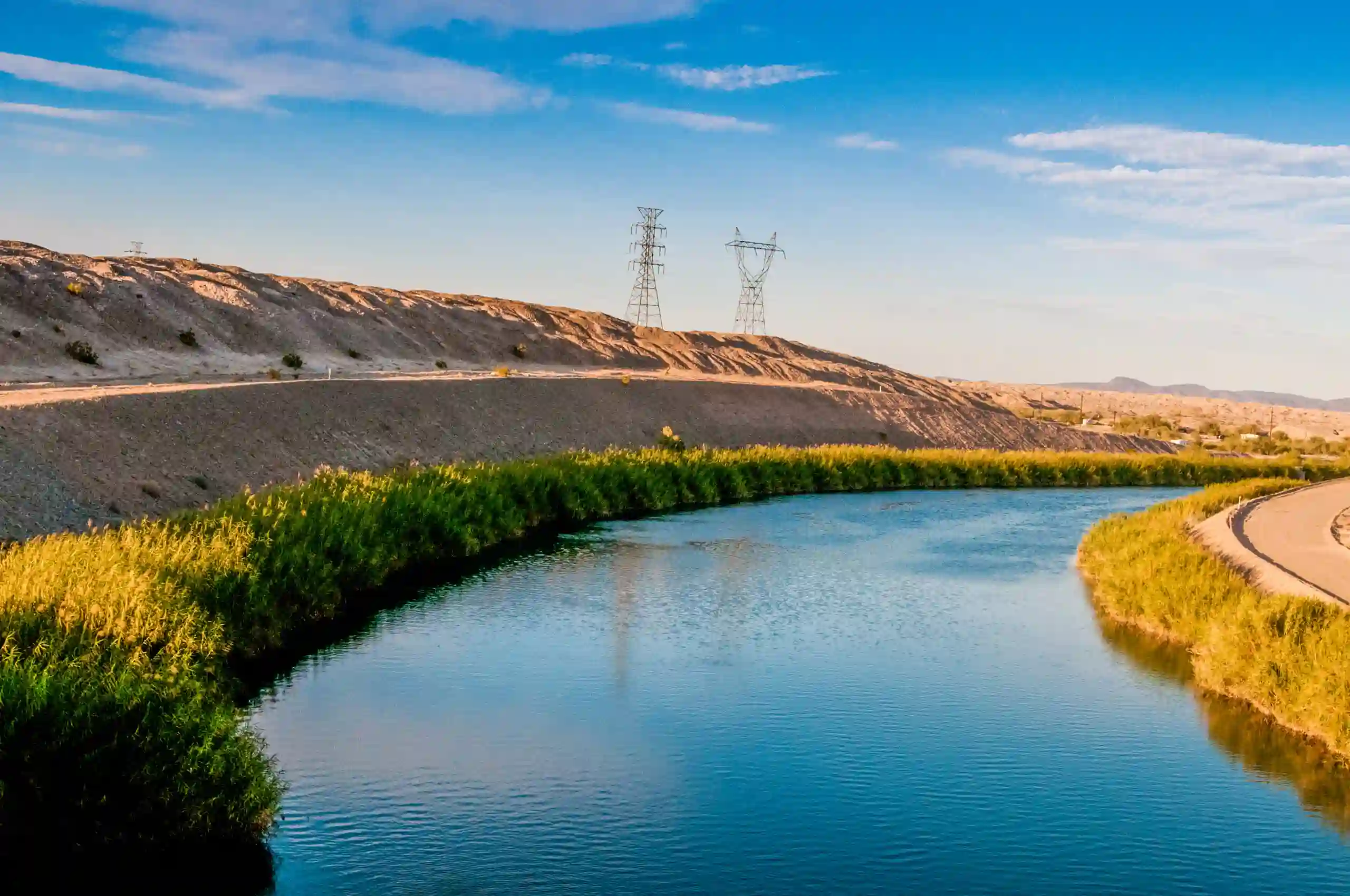
Similarly, a binational study has analyzed the feasibility of constructing desalination plants in the Sea of Cortez to increase Mexico’s water supply, with the idea that in return Arizona could receive a portion of Mexico’s Colorado River water.[40] This creative form of international collaboration may be cheaper than other strategies to increase water supply. However, desalination is often an expensive way to address water scarcity, especially compared to conservation measures or DPR, which is possible with current facilities.[41] If the state does pursue desalination, it is important to do so in a cost-effective manner that avoids the pitfalls of previous projects.
It is much more efficient to keep plants running than to shut them down when water becomes less scarce—a major lesson from other cities’ desalination attempts. For example, the city of Santa Barbara recently learned that it would cost $10 million to restart its plant, which was “moth-balled” in the 1990s.[42] Australia had similar experiences after the Millennium Drought abated, and the country was left spending millions of dollars to maintain dormant plants.[43]
Cooperative, interstate investments in new water sources would help decrease Arizona’s dependency on existing water supplies, possibly even allowing the state to lease water to neighboring states, especially in times of extreme drought when prices spike. Moreover, as water becomes scarcer, strategies to augment supply that today are relatively expensive will become more feasible. Colorado River flows have dwindled over the past century and are expected to fall further.[44] Because Arizona is a junior rights holder to the river’s water, options such as desalination that create new sources of water could become more attractive, especially as the state’s population continues to grow.
Avoid strategies to increase water supply that are not cost-effective.
Several strategies that have been suggested to augment supply are likely to be cost-prohibitive. They include constructing a pipeline to the Missouri River or expanding existing reservoirs. In addition to their high sticker prices, these strategies are likely to encounter various political hurdles. Importing water from the Missouri River Basin would affect millions of users across multiple states, and it is unclear that securing political support for such a deal would be any more tractable than negotiations between states within the Colorado River Basin have proven to be. On the other hand, reservoir expansion could trigger various environmental impacts that would require costly and lengthy reviews to analyze.
Relatedly, most supply strategies will be far too expensive for farmers to afford, so there would be no direct benefit for them. Augmentation initiatives could help farmers indirectly if they bolster supplies for municipalities, eliminating the need for them to explore agricultural-to-urban transfers. However, several studies suggest such transfers make more economic sense for cities than expensive supply augmentation efforts.
Support voluntary water conservation in urban areas
In recent decades, improvements in indoor plumbing efficiency have contributed to decreases in domestic water demand, while expanded reuse of treated wastewater for non-potable purposes has helped conserve water.[45]
Support municipalities establishing voluntary, incentive-based xeriscaping programs.
Unlike many other major cities in the arid Western states, Arizona’s major cities do not have any incentive-based demand management programs. Currently, policies to curb outdoor water use in both Phoenix and Tucson are limited to efforts at promoting “culture change,” which include telling residents whether they use more or less water than their neighbors.[46] In contrast, cities like Los Angeles and Las Vegas have incentive-based programs that pay residents to replace their grass yards with less thirsty “xeric” plants that often consist of local desert flora. Using this approach, the city of Las Vegas was able to reduce outdoor water use for participating households by 20% at a cost of roughly $1.88 per thousand gallons of water saved.[47]
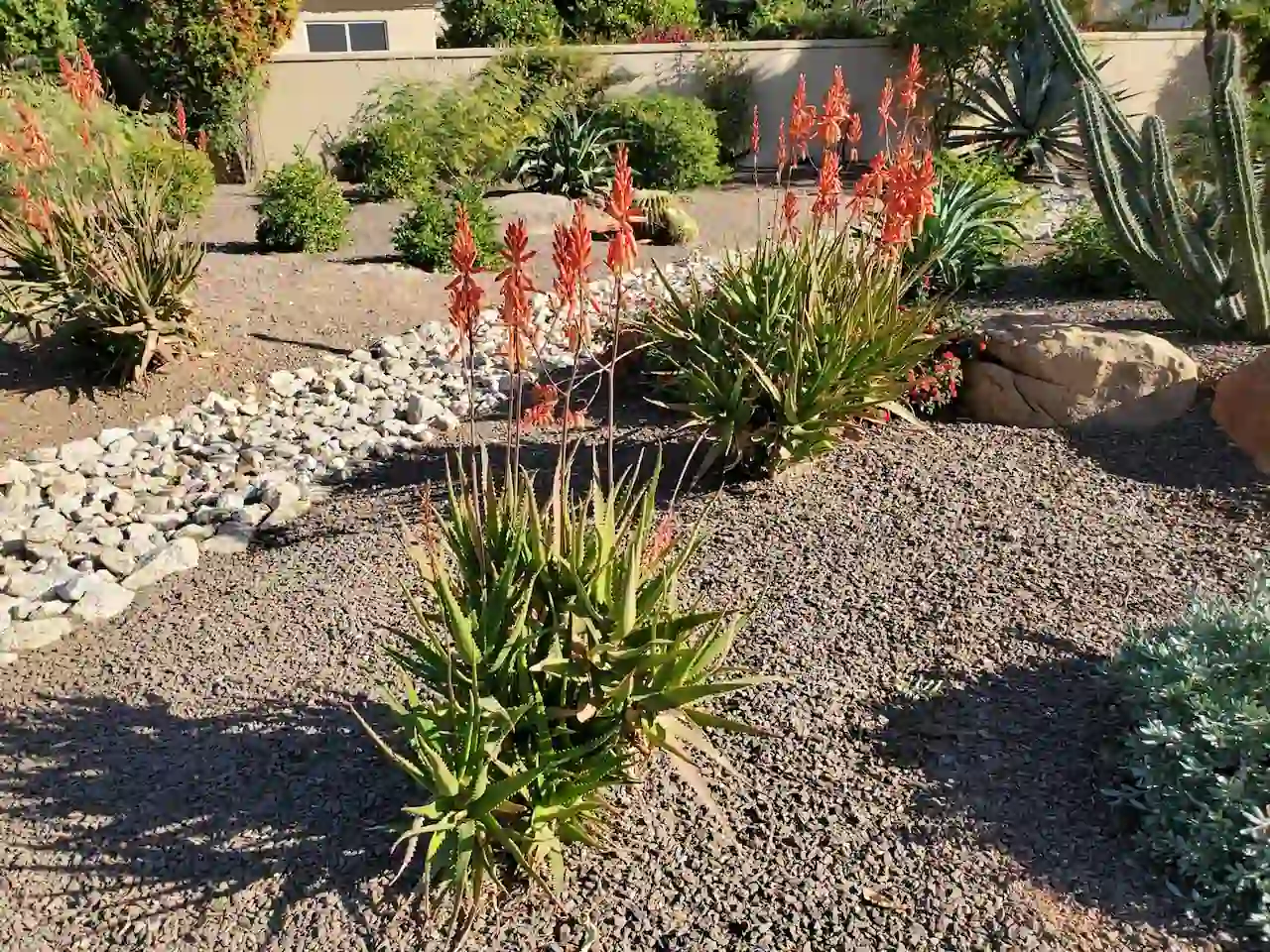
While xeriscaping programs are typically developed and implemented by municipalities, the legislature could facilitate these programs in Arizona by providing seed funding to Phoenix and Tucson to develop their own programs. Doing so would be far more cost effective than some of the supply augmentation options being considered by the state.
Champion continued indoor water reuse.
Much of the indoor water used in Arizona is already reused, meaning managing demand would not lead to large conservation gains. In some areas of the state, the vast majority of treated wastewater is already reused for non-potable purposes such as irrigating landscape, cooling industrial processes, and recharging groundwater. The Phoenix Active Management Area, for instance, reuses 82% of treated wastewater.[48] While conservation gains regarding indoor water use may not be substantial, the state should continue to champion existing reuse efforts as it explores new approaches, such as DPR.
Conclusion
The recommendations outlined in this report can improve Arizona’s water policy to help the state continue to thrive amid its drier future. Water markets allow rights to be traded among competing users in ways that reward conservation, motivate efficient use, and encourage cooperation instead of conflict. Policymakers should support reforms that will promote such water markets. Taking concrete steps to expedite and smooth the process of ongoing adjudications will help achieve these ends.
Another important step in Arizona’s water future will be to ensure that groundwater resources do not fall victim to a tragedy of the commons. The state should support local communities interested in establishing groundwater management regimes that will ensure agricultural and other activities are sustainable. Moreover, while supply augmentation strategies garner headlines, such proposals should be pursued when cost-effective and avoided when not. Likewise, several aspects of current water use offer opportunities to improve efficiency and encourage conservation of the resource.
The water policy reforms suggested here have the potential to help improve water allocation and enhance water supplies, enabling Arizona’s continued growth and economic success well into the future.
To download the print version of this report click here.
About the Goldwater Institute
The Goldwater Institute is the nation’s preeminent liberty organization scoring real wins for freedom from coast to coast. Goldwater is committed to empowering all Americans to live freer, happier lives, and we accomplish tangible results for liberty by working in state courts, legislatures, and communities nationwide to advance, defend, and strengthen the freedom guaranteed by the constitutions of the United States and the fifty states.
About PERC
The Property and Environment Research Center (PERC) is the national leader in market solutions for conservation, with over 40 years of research and a network of respected scholars and practitioners. Through research, law and policy, and innovative applied conservation programs, PERC explores how aligning incentives for environmental stewardship produces sustainable outcomes for land, water, and wildlife. Learn more at www.perc.org.
Authors
Bryan Leonard – PERC: Fellowship Director, Senior Fellow
Bryan Leonard is an associate professor of environmental and natural resource economics in the School of Sustainability and a faculty affiliate in the Economics Department and the Center for Behavior, Institutions, and the Environment at Arizona State University. He is also a senior fellow at PERC, a PERC fellowship director, and a 2017 and 2018 PERC Lone Mountain Fellow.
His research focuses on the design of institutions to resolve collective action problems associated with natural resource and environmental management. He studies the historical context of policies that are crafted to solve resource challenges at a particular point in time and assess their long-run sustainability, with a particular focus on the conditions under which property rights perform better or worse than other policies.
Much of this research can be parsed into three cross-cutting themes: i) tradeoffs between economic efficiency and other goals (such as equity) when assigning property rights; ii) the relationship between property rights and collective action problems; and iii) the modern challenges and historical foundations of public resource management in the American West.
Dr. Leonard holds a Ph.D. in Economics from UC Santa Barbara and a Master’s in Applied Economics from Montana State University.
Tate Watkins – PERC: Managing Editor, Research Fellow
Tate Watkins is a research fellow and managing editor at PERC. His writing has appeared in The Wall Street Journal, The Washington Post, Reason, The Atlantic, The Hill, and many other outlets.
Watkins earned M.A. and B.A. degrees in economics from Clemson University. He previously worked as a journalist reporting on economic development and foreign aid and as a research associate studying public policy in Washington, D.C. He also served in the Peace Corps in Senegal and worked with small-scale farmers in the Haitian coffee sector, where he helped manage an initiative to improve growers’ livelihoods.
End Notes
[1] Ariane Middel, Ray Quay, and Dave D. White, “Water Reuse in Central Arizona: A Technical Report by Decision Center for a Desert City,” Arizona State University (2013): 1.
[2] Grady Gammage Jr., “Return to Watering the Sun Corridor,” Kyl Center for Water Policy at Morrison Institute, Arizona State University (2021): 3.
[3] Return to Watering the Sun Corridor, Gammage Jr, 3.
[4] Andrew Nicla, “Does Arizona Really Use Less Water Now Than It Did in 1957?” Arizona Republic, February 12, 2019.
[5] Arizona Department of Water Resources, “Arizona Water Facts,” accessed January 9, 2023.
[6] Arizona Water Facts, ADWR.
[7] Arizona Water Facts, ADWR.
[8] Brandon Loomis, “Pipelines? Desalination? Turf Removal? Arizona Commits $1B to Augment, Conserve Water Supplies,” Arizona Republic, June 27, 2022.
[9] Tate Watkins, “Brewing Water Conservation in the West,” PERC Reports 37, no. 2 (2018): 14-21; “Brewing Beer to Save Water,” PERC, July 30, 2019.
[10] Peter W. Culp, Robert Glennon, and Gary Libecap, “Shopping for Water: How the Market Can Mitigate Water Shortages in the American West,” The Hamilton Project, Brookings Institute, Stanford Woods Institute for the Environment. Discussion Paper 2014-05 (2014): 15.
[11] Rhett Larson and Kelly Kennedy, “Bankrupt Rivers,” U.C. Davis Law Review 49, no. 4 (2016): 1335.
[12] Rhett Larson and Brian Payne, “Unclouding Arizona’s Water Future,” Arizona State Law Journal 49, no. 2 (2017): 468.
[13] Joseph M. Feller, “The Adjudication That Ate Arizona Water Law,” Arizona Law Review 49, no. 2 (2007): 421.
[14] John E. Thorson, “A Permanent Water Court Proposal for a Post General Stream Adjudication World,” Idaho Law Review 52, no. 1 (2016). Montana lawmakers are also considering establishing a permanent water court. Tom Kuglin, “Bill Proposes Permanent Montana Water Court,” Helena Independent Record, January 10, 2023.
[15] Ann Y. Vonde et al., “Understanding the Snake River Basin Adjudication,” Idaho Law Review 52, no. 1 (2016); Andrew Ayres, “The Water Beneath the Desert,” PERC Reports 41, no. 2 (2022): 34.
[16] Unclouding Arizona’s Water Future, Larson and Payne, 497.
[17] Unclouding Arizona’s Water Future, Larson and Payne, 496-500.
[18] Shopping for Water, Culp, Glennon, and Libecap, 16-17.
[19] Nick Hagerty and Bryan Leonard, “Interior’s Plan Won’t Solve the Colorado River Crisis. Here’s What Will.,” High Country News, October 19, 2022.
[20] Arizona Department of Water Resources, “Overview of the Arizona Groundwater Management Code,” accessed January 9, 2023.
[21] Shopping for Water, Culp, Glennon, and Libecap, 25.
[22] Arizona Department of Water Resources, “Active Management Areas,” accessed January 9, 2023.
[23] Arizona Department of Water Resources, “Active Management Areas,” Fact Sheet, (March 2016).
[24] Active Management Areas Fact Sheet, ADWR. Ian James and Rob O’Dell, “Megafarms and Deeper Wells Are Draining the Water Beneath Rural Arizona – Quietly, Irreversibly,” Arizona Republic, December 27, 2019.
[25] The Water Beneath the Desert, Ayres, 35; Andrew B. Ayres, Kyle C. Meng, and Andrew J. Plantinga. “Do Environmental Markets Improve on Open Access? Evidence from California Groundwater Rights,” Journal of Political Economy 129, no. 10 (2021).
[26] Overview of the Arizona Groundwater Management Code, ADWR.
[27] Jake Frederico, “Cochise County Voters Approve One Groundwater Management Plan, Reject Another,” Arizona Republic, November 10, 2022.
[28] Arizona Department of Water Resources, “Active Management Areas, Election to Designate AMA for the Douglas Basin,” accessed January 9, 2023.
[29] Shopping for Water, Culp, Glennon, and Libecap, 25.
[30] Sarah Heard, Matthew Fienup, and E.J. Remson, “The First SGMA Groundwater Market Is Trading: The Importance of Good Design and the Risks of Getting It Wrong,” California Agriculture 75, no. 2 (2021): 54-55.
[31] Arizona Water Banking Authority, “Objectives,” accessed January 9, 2023.
[32] Arizona Water Banking Authority, “Interstate Banking,” accessed January 9, 2023; Shopping for Water, Culp, Glennon, and Libecap, 19.
[33] A.R.S. §§ 45-151(A), 45-833.01.
[34] Warren Tenney, “Understanding Potable Reuse – A Vital Water Supply Solution,” Arizona Municipal Water Users Association Blog, July 19, 2022.
[35] Annika Kim Constantino, “What’s in Your Drinking Water? If You Live in One of These States, It Might Soon be Recycled Sewage,” CNBC.com, August 19, 2022.
[36] Colorado recently approved direct potable reuse, joining New Mexico, Ohio, and South Carolina. California and Florida are in the process of developing DPR programs. Jerd Smith, “Colorado OKs Drinking Treated Wastewater; Now to Convince the Public it’s a Good Idea,” Water Education Colorado, October 12, 2022.
[37] Arizona Department of Environmental Quality, “Direct Potable Reuse (DPR) Comprehensive Rulemaking,” July 19, 2022.
[38] Alex Hager, “As the Colorado River Shrinks, Water Managers See Promise in Recycling Sewage,” September 14, 2022.
[39] Central Arizona Project, “California, Arizona Water Agencies Partner to Advance Development of Large-Scale Recycled Water Project,” KUNC, October 13, 2021.
[40] Black & Veatch and Libra Ingenieros Civiles, “Binational Study of Water Desalination Opportunities in the Sea of Cortez,” (2020).
[41] Based on a binational study of desalination opportunities in the Sea of Cortez, infrastructure construction costs would exceed $3 billion to deliver water at approximately $2,000 per acre-foot. Binational Study of Water Desalination Opportunities, Black & Veatch and Libra Ingenieros Civiles. While costs for direct potable reuse depend greatly on-site specifics, the process can be accomplished with existing facilities at estimated prices as low as $820 per acre-foot, with a high-end cost estimate of $2,000 per acre-foot. Robert S. Raucher and George Tchobanoglous, “The Opportunities and Economics of Direct Potable Reuse,” WateReuse (2014).
[42] News Channel 3-12, “Desal Plant Cost Overruns Prompt Calls for More Oversight,” January 12, 2017.
[43] Darryl Fears, “Was Australia’s 10-Year Megadrought a Teaching Moment for California?,” The Washington Post, May 26, 2015.
[44] P.C.D. Milly and K.A. Dunne, “Colorado River Flow Dwindles as Warming-Driven Loss of Reflective Snow Energizes Evaporation,” Science 367, no. 6483 (2020): 1252-55.
[45] Water Reuse in Central Arizona, Middel, Quay, and White, 8.
[46] Brandon Loomis, “Will Colorado River Shortages Limit Water Use? Arizona Cities Seek ‘Culture Change’ First,” Arizona Republic, May 4, 2022.
[47] Christa Brelsford and Joshua K. Abbott. “How Smart Are ‘Water Smart Landscapes’?” Journal of Environmental Economics and Management 106 (2021).
[48] Water Reuse in Central Arizona, Middel, Quay, and White, 1.



